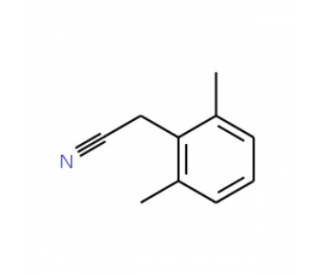详细说明
Purity
>95%, by SDS-PAGE under reducing conditions and visualized by silver stain
Activity
Measured by its binding ability in a functional ELISA. Immobilized recombinant mouse EphB3 Fc Chimera at 2 µg/mL (100 µL/well) can bind biotinylated Recombinant Human Ephrin‑B3 Fc Chimera with a linear range of 1.3-80 ng/mL.
Optimal dilutions should be determined by each laboratory for each application.Source
Spodoptera frugiperda, Sf 21 (baculovirus)-derived
Human Ephrin-B3
(Leu28-Ser224)
Accession # Q15768IEGRMD Human IgG1
(Pro100-Lys330)6-His tag N-terminus C-terminus Accession #
N-terminal Sequence
AnalysisLeu28
Structure / Form
Disulfide-linked homodimer
Predicted Molecular Mass
49.2 kDa (monomer)
SDS-PAGE
58 kDa, reducing conditions
BT395 |
| |
Formulation Lyophilized from a 0.2 μm filtered solution in PBS with BSA as a carrier protein. | ||
Reconstitution Reconstitute at 100 μg/mL with sterile PBS. | ||
Shipping The product is shipped at ambient temperature. Upon receipt, store it immediately at the temperature recommended below. | ||
Stability & Storage: Use a manual defrost freezer and avoid repeated freeze-thaw cycles.
|
Background: Ephrin-B3
Ephrin-B3, also known as Elk-L3, LERK8, Eplg8, NLERK-2, and EFL6, is an approximately 50 kDa member of the Ephrin-B family of transmembrane ligands that bind and induce the tyrosine autophosphorylation of Eph receptors. The extracellular domains (ECD) of Ephrin-B ligands are structurally related to GPI-anchored Ephrin-A ligands. Eph-Ephrin interactions are widely involved in the regulation of cell migration, tissue morphogenesis, and cancer progression. Ephrin-B3 preferentially interacts with receptors in the EphB family and also with EphA4. The binding of Ephrin-B3 to Eph proteins also triggers reverse signaling through Ephrin-B3 (1, 2). Mature human Ephrin-B3 consists of a 199 amino acid (aa) extracellular domain (ECD), a 21 aa transmembrane segment, and a 93 aa cytoplasmic domain (3, 4). Within the ECD, human Ephrin-B3 shares 96% and 97% aa sequence identity with mouse and rat Ephrin-B3, respectively. Ephrin-B3 is expressed on oligodendrocytes and neurons in the hippocampus and along the midline of the spinal cord (5-9). It is up-regulated in glioma and promotes tumor cell invasion and migration (10). Ephrin-B3 functions as a repulsive axon guidance molecule by inducing growth cone collapse, neurite retraction, and axon pruning (5-8). Its repulsive effect along the spinal cord midline restricts motor neuron axons to their ipsilateral sides, thereby maintaining the independence of voluntary left side/right side movements (8, 9). Ephrin-B3 plays a role in the regulation of excitatory synapse density and synaptic maturation (6, 11, 12). It also functions as a cellular receptor for Nipah virus (13) and can induce the migration of memory B cells (14).
References:
Miao, H. and B. Wang (2009) Int. J. Biochem. Cell Biol. 41:762.
Pasquale, E.B. (2010) Nat. Rev. Cancer 10:165.
Gale, N.W. et al. (1996) Oncogene 13:1343.
Nicola, N.A. et al. (1996) Growth Factors 13:141.
Benson, M.D. et al. (2005) Proc. Natl. Acad. Sci. USA 102:10694.
Xu, N.-J. et al. (2011) Nat. Neurosci. 14:1421.
Xu, N.-J. and M. Henkemeyer (2009) Nat. Neurosci. 12:268.
Kullander, K. et al. (2001) Genes Dev. 15:877.
Yokoyama, N. et al. (2001) Neuron 29:85.
Nakada, M. et al. (2006) Cancer Res. 66:8492.
McClelland, A.C. et al. (2010) Proc. Natl. Acad. Sci. USA 107:8830.
Antion, M.D. et al. (2010) Mol. Cell. Neurosci. 45:378.
Negrete, O.A. et al. (2006) PLoS Pathog. 2:e7.
Holen, H.L. et al. (2011) Scand. J. Immunol. 74:144.
Entrez Gene IDs:
1949 (Human); 13643 (Mouse)
Alternate Names:
EFL-6; Efnb3; Elk-L3; EPH-related receptor tyrosine kinase ligand 8; Ephrin B3; EphrinB3; Ephrin-B3; Epl8; EPLG8EPH-related receptor transmembrane ligand ELK-L3; LERK-8; LERK8EFL6; NLERK-2











 粤公网安备44196802000105号
粤公网安备44196802000105号